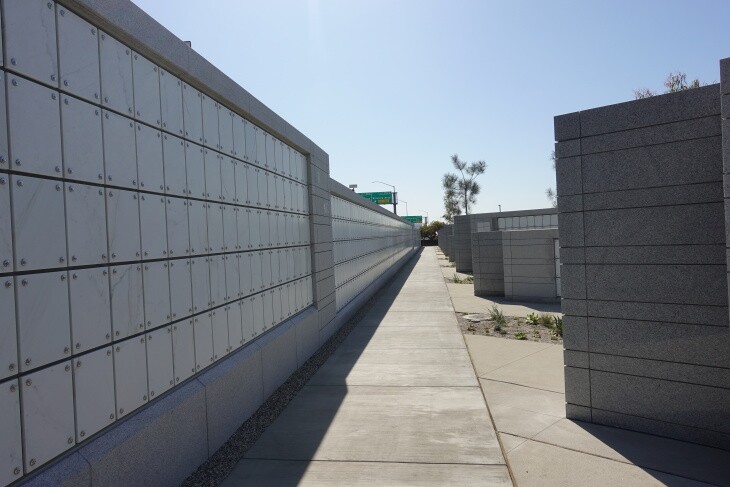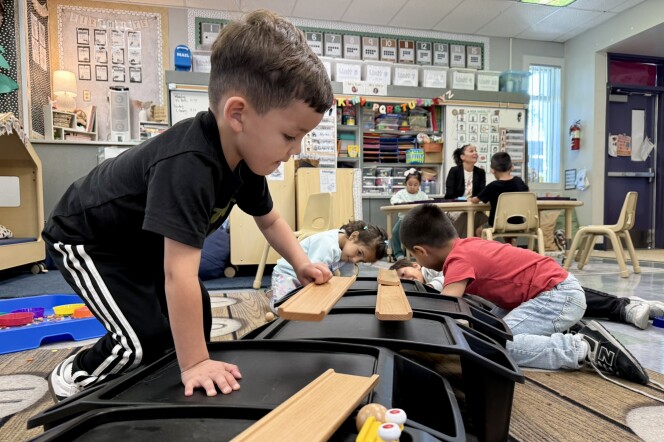With our free press under threat and federal funding for public media gone, your support matters more than ever. Help keep the LAist newsroom strong, become a monthly member or increase your support today.
LA's Only National Cemetery For Vets Is Finally Taking New Applications After More Than 40 Years

For the first time in decades, veterans and local military families have access to a final resting place alongside fellow servicemembers in the city of L.A.
The Los Angeles National Cemetery, closed to new burials since 1978, is once again accepting applications for interment.
"It's fantastic, and I'm starting to tear up a bit, because I know what it means to the veterans and their family members," said cemetery director Tom Ruck.
The openings are thanks to a newly expanded columbarium, a series of thick concrete walls with niches to store cremated remains, which opened Oct. 1. As property values climb and space for below-ground burials becomes scarcer, the Department of Veterans Affairs is building more of these high-density memorial structures in cities around the country.
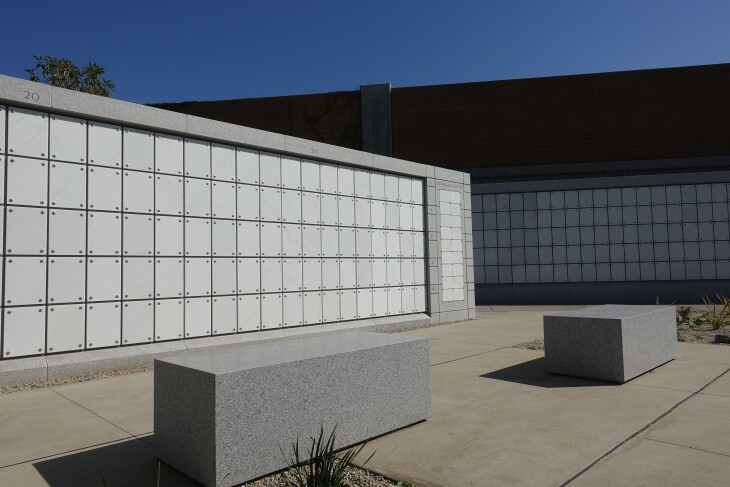
For myriad personal and religious reasons, the columbarium option is not for everyone. Angeleno families who choose a casket burial will still have to drive to Riverside or Bakersfield for the nearest veterans cemetery with room to accommodate new applications.
The L.A. National Cemetery, first put to use in 1889, is home to servicemembers from conflicts dating back to the Civil War. It houses roughly 90,000 graves between Brentwood and Westwood, just east of the 405, north of Wilshire Blvd.
Moviegoers may recognize the solemn white stone markers dotting an immaculate green lawn; film shoots sometimes use the setting as a substitute for Arlington National Cemetery.
The new columbarium niches are behind UCLA's Jackie Robinson baseball stadium on the West L.A. Veterans Affairs campus, across the freeway from the main cemetery.
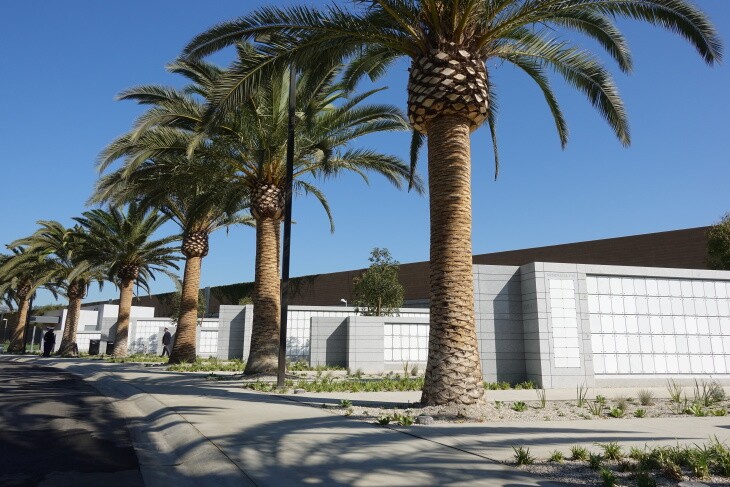
The first phase of expansion includes space for about 10,000 veterans, their spouses and qualifying dependent children. The ultimate project should nearly double the capacity of the entire cemetery to 180,000.
Veterans have to meet certain criteria to be eligible for burial in a national cemetery, including being discharged with status other than "dishonorable." Niche, marker and site upkeep are free of charge, but cremation must be arranged and paid for independently.
Ruck said that applicants can't reserve specific columbarium niches. "We can't take reservations," he said. "We just can't."
He expects a bit of a rush from years of pent-up demand. After 40 years of "no vacancies" at the local veterans cemetery, Angelenos who may be holding on to remains in an urn at home can find them a permanent resting place in the new structure.
"I can tell you that there's a whole lot of people who have mom, or dad or uncle or brother in the closet, just waiting for this to happen," Ruck said. "We're going to be able to take care of them with dignity, with honor and with pride."
NATIONWIDE SOLUTION TO A TIGHT SQUEEZE
During a visit to Los Angeles for the dedication of the expanded columbarium, U.S. Secretary of Veterans Affairs Robert Wilkie acknowledged the real estate crunch facing his agency's National Cemetery Administration.
"Space is running out," Wilkie said. In large cities, "there's a premium on everything."

In 2015, VA announced its Urban Initiative, a series of projects to expand cemetery capacity in densely populated cities: L.A., New York, Indianapolis, Chicago and San Francisco. Los Angeles' columbarium is the first completed project under the initiative.
Wilkie says it's important for VA to provide space-efficient options for veterans who live in crowded cities. "We did not want to have to force families to travel all over the state to visit their family members," he said. "This is an important part of what we're doing."
But VA is behind schedule and over budget on a number of new cemeteries and expansion projects like those of the Urban Initiative, according to a Government Accountability Office report released last week.
Over the summer, the VA estimated that the San Francisco cemetery project -- first slated for completion in 2017 -- would not open until at least 2027 due to "major geotechnical and soil issues" at the site.
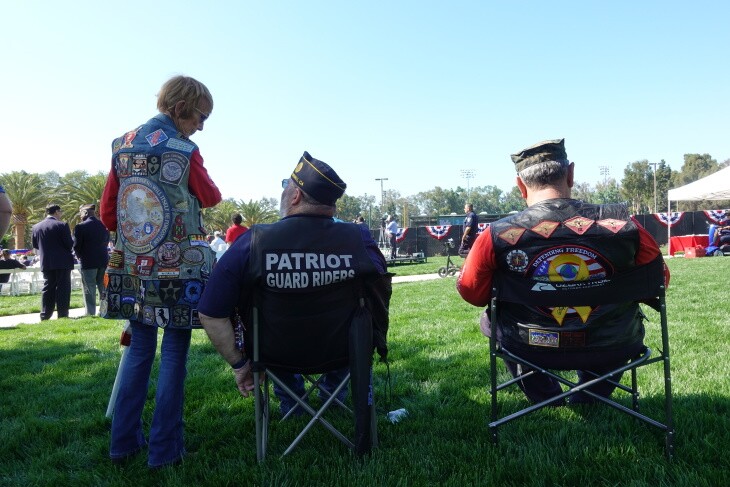
What's the holdup elsewhere? Anyone familiar with the hot real estate market in Los Angeles should be able to predict: it's about location, location, location.
"The primary factor delaying NCA's completion of these cemeteries has been challenges in acquiring suitable land," the GAO said. One extreme example: the VA in Chicago is on its fifth attempt (since 2011) at buying land for its veterans cemetery. Four previous tries went bust, mostly because the asking price went over-budget.
The report "recognized the obvious: in places like this, everybody is short of land," Wilkie said, adding that the agency has encountered more hurdles than just cost limitations.
"We have to spend a great deal of time, and we can't just outright buy a property," Wilkie said. "We have to engage with local governments, we have to convince them that we want them as partners, because we're serving their citizens as well."
Wilkie says the agency is doing its best to work around the problem by offering to take over old military property that's fallen into misuse -- turning that into veterans cemeteries. That's what VA has planned at a former Navy base in Alameda, Calif. outside of San Francisco.
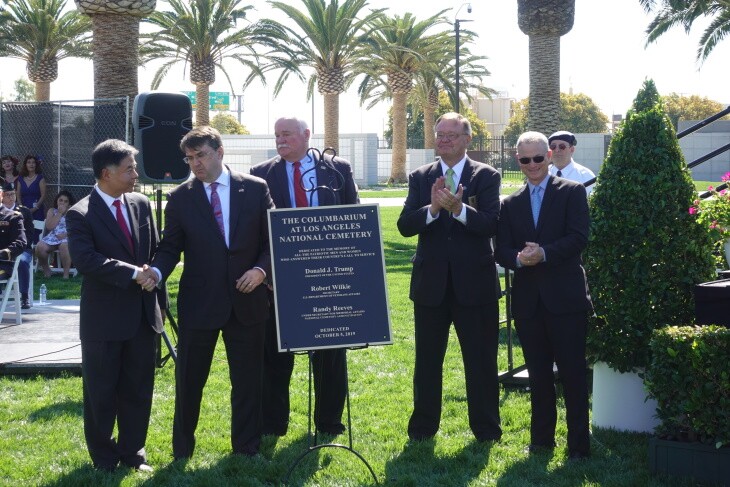
A NICE PLACE TO REST
During the dedication ceremony, actor and veteran activist Gary Sinise said the columbarium "will serve to education and remind generations present and future about the true cost of war -- and to honor the men and women who have selflessly served our nation."
Veteran Leon Waldman -- who served in the Army Air Corps, the precursor to the Air Force -- came to the L.A. National Cemetery columbarium on Saturday intending to scope out his future resting place. He was a B-17 waist gunner during World War II, flying dozens of missions over Europe.
Waldman's been waiting a while for this day. He first arranged for his own cremation more than 10 years ago.
"I've got the empty urn sitting at home waiting to go in one of these niches," he said, surveying the fresh landscaping and rows of empty concrete slabs. "It's nice. We're all outdoors."
Waldman's son lives here in Los Angeles, and out-of-town cemeteries wouldn't be convenient for family visiting from New York.
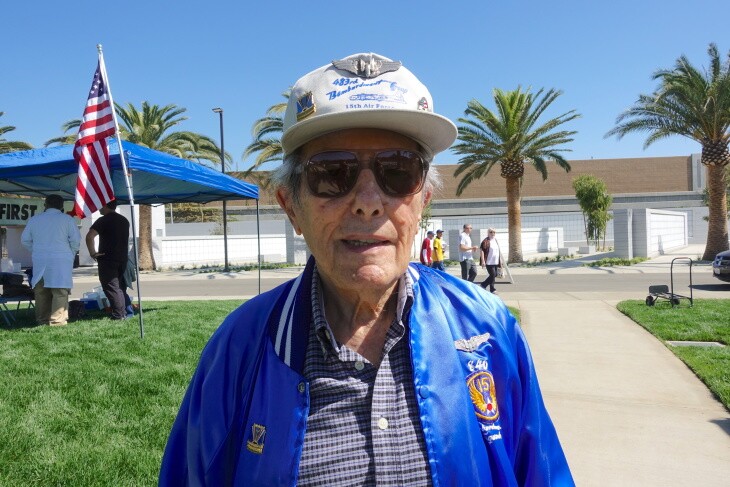
"There wasn't much chance of getting in with a casket into the main grounds," he said. "It's good I've got a nice place to come to. I can't afford Westwood, so this is the way I'll make it." Waldman lives in the San Fernando Valley now, but he once lived nearby, in Brentwood.
SHAKING THE RUST OFF
The first veteran burial is scheduled for Oct. 15. Until then, the Los Angeles National Cemetery staff, long out of practice, will be rehearsing.
"We do this at 138 cemeteries around the nation," Ruck said. "But we have to catch up here in L.A."
He estimates the expanded columbarium will be able to accommodate veterans and their spouses for the next 30 years.
"A whole generation or two of veterans who have passed have had to go other places. We didn't have the option for them," Ruck said. "Now they can make their choice, and that's a beautiful thing."
